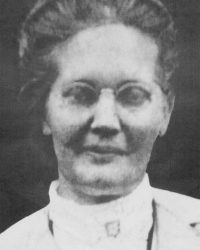
Georgia Anna Burrus
Georgia Anna Burrus was born July 19, 1866. Despite family opposition, she joined the Adventist church at age 16 and enrolled as a working student at Healdsburg College in California. She then taught in the Bible Training School in Oakland. While engaged as a Bible worker, she responded to a
call by S.N. Haskell for women to work in India. In 1893, the General Conference voted to send her and Myrtle Griffs to India. Georgia enrolled for the nursing course at St. Helena and then a special class at Battle Creek that prepared workers for foreign mission service. Myrtle’s poor health led her to drop out of her India plans. Georgia herself had some medical issues but recovered, and she took that as a sign of God’s care and guidance.
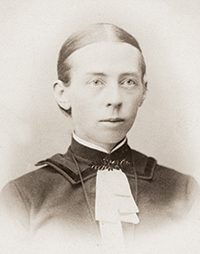
Maria L. Huntley
Maria L. Huntley was born on August 9, 1848, in Lepster, New Hampshire, to Albert and Lucy Huntley, both pioneers of the “Sabbath cause” in connection with the Advent Movement. Albert and Lucy had wed in 1840 and had four children, three of whom did not reach adulthood. Maria was the second child born to the couple, after they lost an infant daughter in July of 1847. By the end of 1887, Maria moved to California to take charge of the missionary department at Healdsburg College for the ensuing year, thus fulfilling W.C. White’s wish. After nearly a year in California, successfully developing the missionary department at Healdsburg College and teaching two large missionary classes, Maria moved back to Battle Creek in November of 1888.
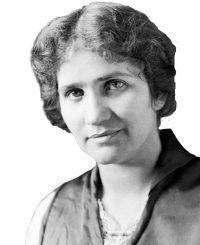
Agnes Elvira Lewis Caviness
Agnes Caviness was born October 31, 1889, in Minneapolis, Minnesota. After studying at Union College, Keene Industrial Academy, and Walla Walla College, she graduated from Pacific Union College (PUC) in 1912 as the first college graduate on the Angwin campus. (Caviness expressed her loyalty to PUC in her Founders’ Day address in 1956.) After serving overseas for 12 years, the family moved to PUC, where she taught French and German and pioneered teaching classes on marriage and the family. She frequently wrote articles for denominational publications on family life. Those who knew the Caviness family considered their home a center of culture and hospitality. Her books included The Way He Should Go and Letters from Mother Naomi. The latter she based on letters she had written in response to requests for advice, which then appeared anonymously in the Review and Herald from 1933 to 1945.
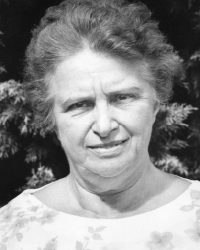
Florence Muriel Howe
Florence Muriel Howe was born February 19, 1908, at Plattsburg, New South Wales, Australia. In 1931, Muriel enrolled at Australasian Missionary College (now Avondale University College), and for three years she paid her own fees as a full “industrial student.” During this time the conviction grew that the Lord was calling her to devote her life to China. Upon leaving China at the end of 1949, Muriel moved to the United States and upgraded her qualifications to a bachelor’s degree in nursing education at Washington Missionary College. As it was unlikely she could ever return to China, she accepted an invitation to mission service in Africa in 1951, remaining there until 1954. During that time she worked at Malamulo Hospital, where she had the responsibility for the general nursing and midwifery training programs. Muriel Howe retired in Loma Linda in 1976. She spent the last months of her life in a nursing home operated by two former students from her Taiwan years.
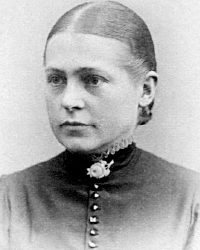
Hetty Hurd Haskell
Hetty Haskell was born January 23, 1857, in Jacksonville, Illinois. In 1885, she attended one of the first Adventist training schools for Bible instructors in San Francisco. She served as a Bible instructor and trained others for the work, first in California and then in London, England. Hetty Haskell helped her husband conduct major urban evangelistic campaigns between 1901 and 1912 from New York City to California. She organized and oversaw the Bible instructors, visiting nurse programs, and magazine salespeople, and took care of finances and other logistics. As the College of Medical Evangelists struggled to gain accreditation, one of the greatest needs was for a clinical training facility in a large city. In 1915, a committee decided there was not enough money and concluded that they should shut down the Loma Linda medical program. Then a group of four women requested to speak to the council, including Hetty Haskell. The women offered to help raise $61,000 to build and equip the vital clinical hospital, suggesting that the church name it after the recently deceased Ellen G. White, who had long urged that the denomination have a medical school.
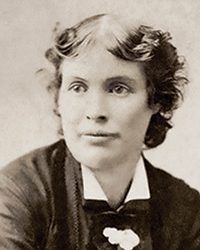
Kate Lindsay (from the March Recorder Cover)
Catharine “Kate” Lindsay was the first female Seventh-day Adventist physician and medical missionary. An educator, professor, and author, Lindsay was a leader in the development of the first Adventist school of nursing. Lindsay devoted nearly 50 years to working in Adventist sanitariums (Battle Creek, Claremont, Boulder) and nearly 40 years to teaching nursing students at these institutions.
In addition to her time and service to others, she also generously donated financially toward various needs. Lindsay was described as "a nurse as well as a physician [who] brought to this first school a richness of fundamental principles relative to both theory and the practical work needed by a nurse, so that as we view those early years we can but look upon Dr. Lindsay as a Florence Nightingale to this people. Indeed, she was inspired by the dynamic spirit of Florence Nightingale to devote her life to this work, and until the day of her death her heart was in the work of training medical missionary nurses."
During 1936, the College of Medical Evangelists (now Loma Linda University) Board of Trustees, upon recommendation by their School of Nursing faculty, named the original girls’ dormitory built in Loma Linda in 1910 “Kate Lindsay Hall.”





